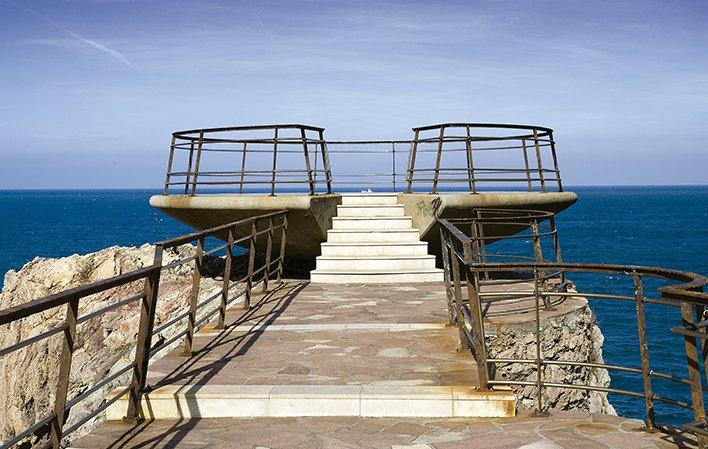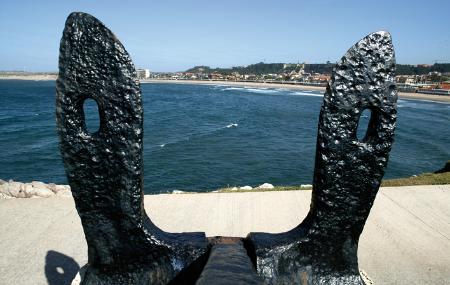
Las Anclas Museum
- Location Castrillón Asturias Centre
- Address Address: La Colonia ■ 33408 - Salinas
- Phone Phone: 985 502 163
- Site: Visit
- Schedules and prices: View
Images
Info
The Philippe Cousteau Anchor Museum rises in the form of a watchtower on the peninsula of La Peñona, a natural promontory surrounded by the sea, at one end of the beach of Salinas, a town located in the council of Castrillón.
It is an original creation to pay homage to the sea, its people and all the culture it represents.
Among the permanent exhibitions are:
Deck of sails and anchors.
On a platform 90 metres long, 6 metres wide and 2 metres high, six sails made of sheet steel are raised. The anchor chains emerge from the sails and rest on the deck.
Bust of Philippe Cousteau
On a rock battered by the sea, the Peña Lisa, stands the large bronze bust of Philippe Cousteau, symbol of a life dedicated to the sea and whose human and scientific values have marked the course of many generations.
Large Mural
A large ceramic mural, while respecting the environment, serves as an introduction to the museum and is integrated into the square that serves as the entrance.
Temple of the Oceans
In the centre of the curve drawn by the deck of sails and anchors, a compass rose is erected on the ground where the container or shell where the waters of the different oceans are poured is placed. A viewing platform in the shape of a spherical bowl, located at the highest point of La Peñona and cantilevered over the sea, completes the ceremonial space.
The Museum is conceived as an open-air monumental complex comprising:
- Deck of sails and anchors
- Bronze bust of Philippe Cousteau
- Great Mural
- Temple of the Oceans
The artistic works are located in a place of great natural beauty, the peninsula of La Peñona, which in the form of a watchtower rises at one end of the beautiful beach of Salinas, one of the most important urban centres of the council of Castrillón in the Principality of Asturias.
Schedules and prices
Free visit
Free access
How to get here
First Name: Las Anclas Museum
GPS: 43.57893,-5.968305
Address: La Colonia ■ 33408 - Salinas
Pets allowed.
Declared a Blue Centre.

